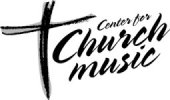Center For Church Music, Songs & Hymns

Recent articles
- Kids Choir Camp 2012: A Soldier of the Cross!
- Thursday Music at Peace
- Kids Choir Camp 2011: A Child of the KING!
- How You Can Help
- The Song of the Cross
Great Hymns of the Faith CDs
Categories
- Music
- The Weight of Glory
- Be Prepared
- Singing Hymns
- Scripture and Song
- Singing Lessons
- John Wesley on Singing
- Colossians 3:16
- Singing: A Call to Excellence
- Worship
- Billys Questions
- The Early Church
- Lent
- Singing Hymns
- C.S. Lewis on Worship
- Kids Choir Camp
- Song and the Spirit
- A Song of Christmas
- Knowing Christ
- Christmas Eve Truce
- Scripture and Song
- Heavenly Song
- Sing Praises
- True Worship
- A Sacrifice of Praise
- From the Choir Director
- Senior Choir Tips
- Worship
- The Last Words of Moses
Our Author

Music & Worship
Tunes, Meters & Other Hymn Info
< Previous Article
When we sing a hymn, we are singing history. It may be a brief time span or one encompassing hundreds of years. Writers of the text, or poem, usually appear on the left side of the page while writers of the music appear on the right side. Almost always the tune name is in ALL CAPS on the right side of the page. But, what these mysterious terms mean, including "meter numbers", can be confusing. We want to help. Below, we begin discussing "tunes" and texts".
HYMN TUNES AND HYMN TEXTS
As we sing hymns, the two most obvious components are the words, the music--and specifically the melody. When you think of, for example, our national anthem, your mind "plays" or processes the melody first and then comes the words. Because music is "evocative", that is, it evokes images or memories of people, places or events, the melody or tune is very important when it comes to remembering a hymn.
Ultimately, however, the meaning of the words determine the significance of the hymn, though the words live or reside "inside" the melody. Many years ago, there were two very famous Broadway musical collaborators: Oscar Hammerstein and Richard Rodgers. Hammerstein was responsible for writing the words and Rodgers for writing the music. Hammerstein was continually frustrated because most people associated Richard Rodgers with the famous songs from their many musicals such as Camelot or The Sound of Music.
This is understandable because of the way our minds process musical images. When we think of a great hymn, it is impossible to distingish the words from the music--they become one entity. Although one tune can be used for several different texts, almost always, one tune and one text seem to prevail in our minds.
Therefore, it is important to discuss the writer of the words and the writer of the melody. Often, one or both of them is anonymous, but almost always there is an interesting story behind them both.
We'll talk more about this in future essays.
